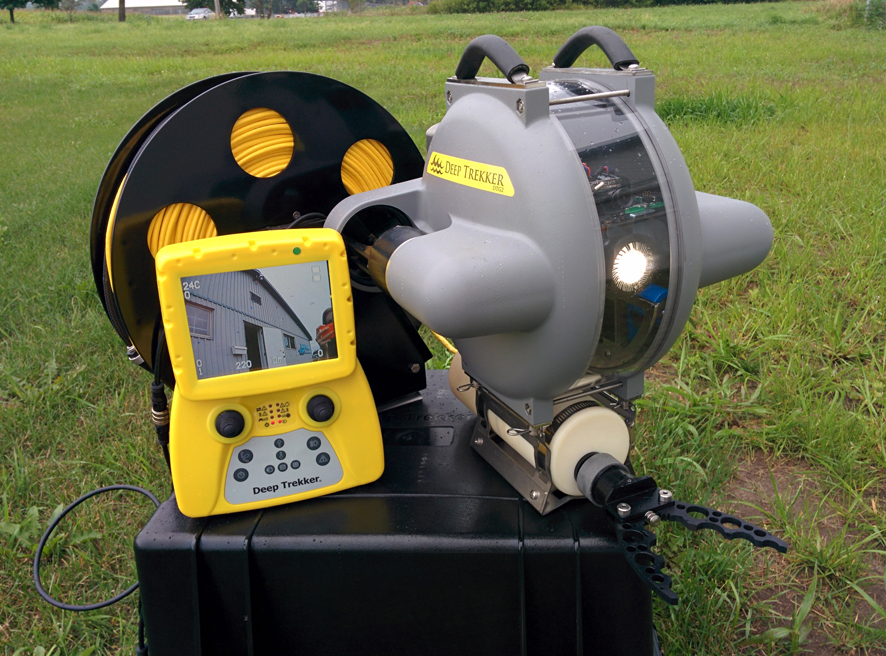
Versatile, affordable ROV
October 22, 2014
By David Scarratt
 An affordable
An affordableWhat can you do when you perceive a problem underwater at your fish farm or need to check a mooring, or simply want to see what may be happening at the bottom of a cage? Often the answer has been to call out the divers. But there are alternatives: remotely operated underwater vehicles (ROVs) are becoming relatively common-place, although many are large and very expensive. An affordable, easily-handled option is manufactured by Deep Trekker from Ayr, Ontario, Canada.
The Deep Trekker underwater unit comprises two die-cast aluminum sides separated by a 360 degree, poly carbonate window through which the camera can look out. Double o-ring seals keep the water out, and the unit is completely self-contained. The camera itself can rotate through 270 degrees in the vertical plane, and can be rotated to see both below and above the vehicle, and behind it to a limited degree.
Panning the camera is accomplished by turning the ROV to the left or right using the thrusters mounted on each side. To see behind, the pilot can pitch the ROV body and look straight back. Rechargeable batteries that provide the power, all of the electronics, and camera are all located inside the hull. All up, the ROV weighs in at 8.5kg (18.7 lbs), and is rated to depths between 75 and 125 meters depending on the model chosen.
Depth is controlled by using the two thrusters and a patented internal pitch control system. Adjustable ballast weights are located externally in way of the handles, so Deep Trekker can be neutrally buoyant in either salt- or fresh water.
Overall control is by a multifunctional hand-held controller, similar to those popularized for video-games, linked to the ROV by a cable.
Deep Trekker is available in four models ranging from the ‘Starter’ (at $3,000US) to the ‘Worker’ (at $10.000), the company’s most popular model,
The Worker is designed to capture or manipulate objects below the surface and, with the sensor package, allows control of heading and depth. It comes with 100 meters of tether cable, integrated screen controller, cable reel, two-function grabber, sensor package and carrying case. The grabber arm can pick up all sorts of objects one might find underwater, retrieve samples or remove garbage, dead fish (morts), etc. A heavy object can be retrieved by locking the grabber onto it, and hauling the ROV and object back to the surface by the tether. Other options include the ‘CHIRP’ sonar package that enables the ROV to be operated in ‘no visibility’ situations; a thickness gauge; a laser scaler that facilitates estimating the size of fish; and auxiliary lighting to complement the standard lighting system.
The Deep Trekker is versatile: besides the aquaculture industry (so far predominately in Norway, Chile and Canada), sales have been made to commercial divers, pipeline operators, underwater construction firms, search and rescue teams, environmental monitors, and many others in more than 36 countries.
For more information contact Amanda at: acoulas@deeptrekker.com, or visit: http://www.deeptrekker.com/
– D.J. Scarratt
Captions
DT-Worker-2.jpg
The Deep Trekker DTG2 “Worker” model, fitted with the grabber unit, and with its control panel and cable reel, standing on top of the carrying case. The ROV weighs in at 18.8 lbs (8.5kg) and is very portable.
DT-vertical.jpg
Deep Trekker searching more or less vertically downward over an old shipwreck.





